Have you ever gazed at the moon and wondered how to capture its magic on paper? The moon is a fascinating subject for artists of all levels – from beginners to seasoned sketchers. Whether it’s a simple crescent or a detailed landscape featuring a glowing full moon, drawing the moon allows you to tap into its beauty and mystery. Here are 15 moon drawing ideas, complete with step-by-step instructions to guide you, so you can create pencil masterpieces that celebrate the moon in all its phases and moods.
Fast-Track Your Drawing Ability!A pencil drawing course that specializes in taking beginners and teaching them how to draw in a realistic style. The course itself is online video, so you can access it from anywhere in the world...  |
1. Simple Crescent Moon
Why It’s a Good Idea: The crescent moon is an iconic and easily recognizable shape, perfect for beginners.
Suitable For: Beginners or anyone looking to warm up.
Description: The crescent moon represents peace and simplicity. With just a few smooth lines, you can create an elegant crescent that evokes a calming nighttime vibe.
How to Draw:
- Draw a circle as a light guide.
- Use the outer curve of the circle to draw a smaller crescent shape.
- Erase the remaining parts of the circle.
- Add light shading to give the crescent depth.
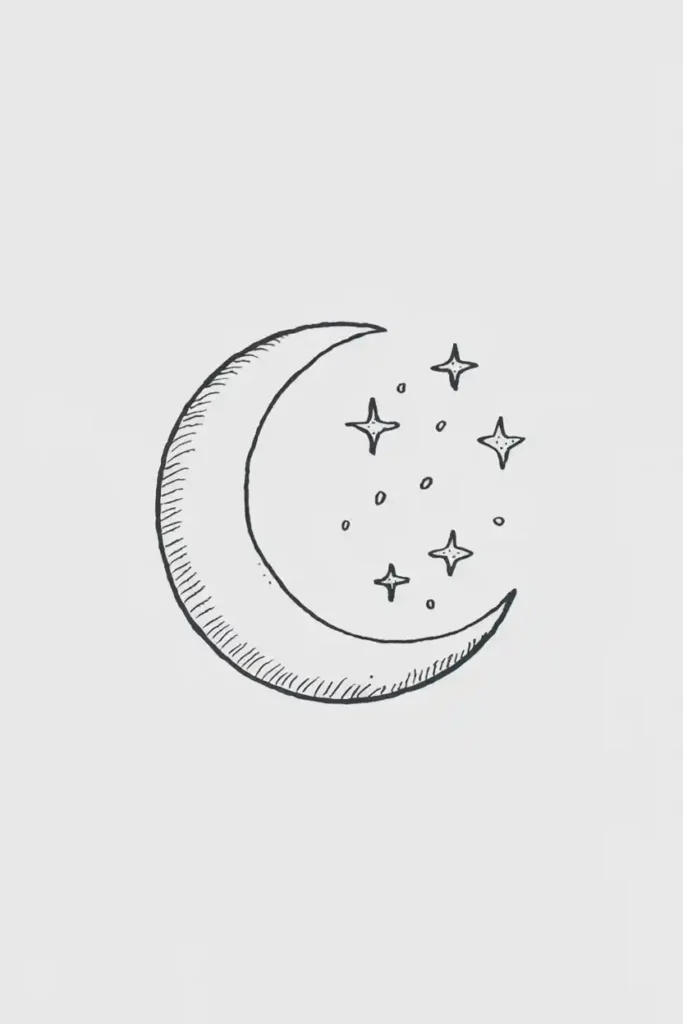

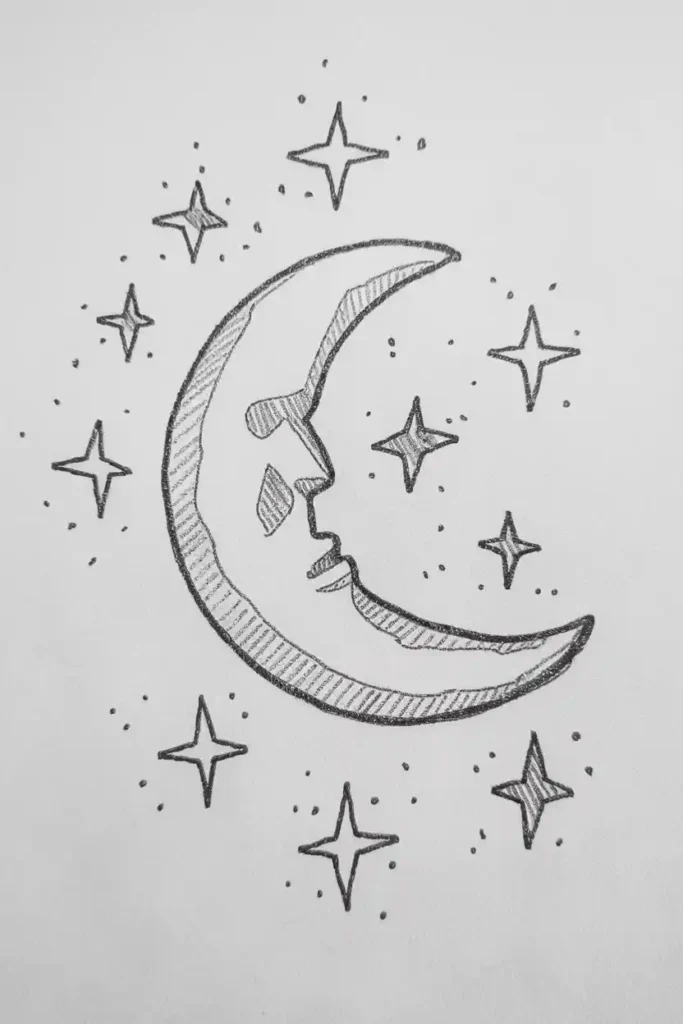

2. Full Moon with Craters
Why It’s a Good Idea: It allows you to practice your shading techniques and texture.
Suitable For: Intermediate-level artists.
Description: A full moon filled with craters looks realistic and intriguing. This is a great exercise for practicing shading to create depth.
How to Draw:
- Start with a perfect circle.
- Lightly draw random oval shapes on the moon’s surface to mark craters.
- Shade around the craters to give the moon a pockmarked appearance.
- Darken the outer edges slightly for a 3D effect.
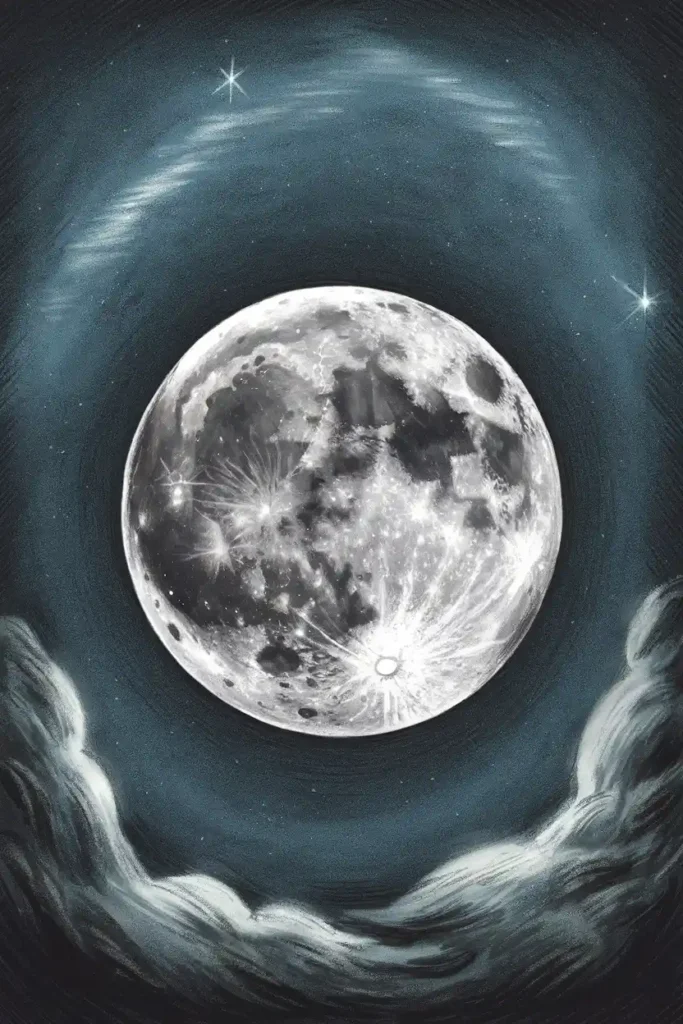

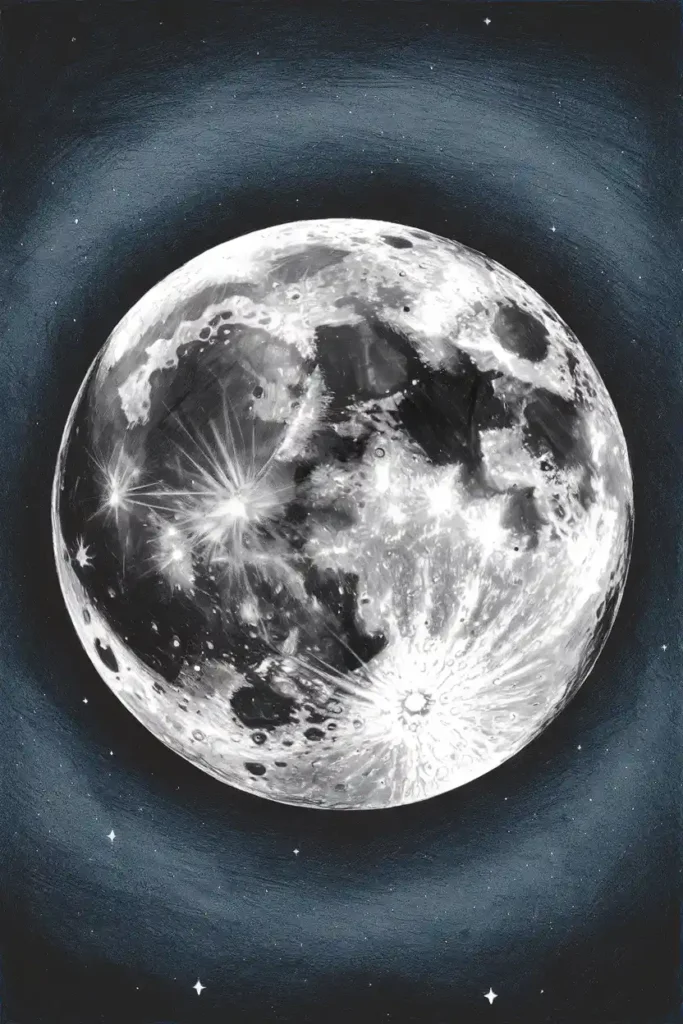

3. Moon Phases Chart
Why It’s a Good Idea: This helps you learn about the moon’s changing phases while practicing drawing.
Suitable For: Beginner to intermediate artists.
Description: A moon phases chart is both artistic and educational, showing the transitions from new moon to full moon.
How to Draw:
- Draw a series of circles in a straight line.
- Shade each one to depict the phases, from new to full.
- Label each phase (new, waxing crescent, first quarter, etc.).
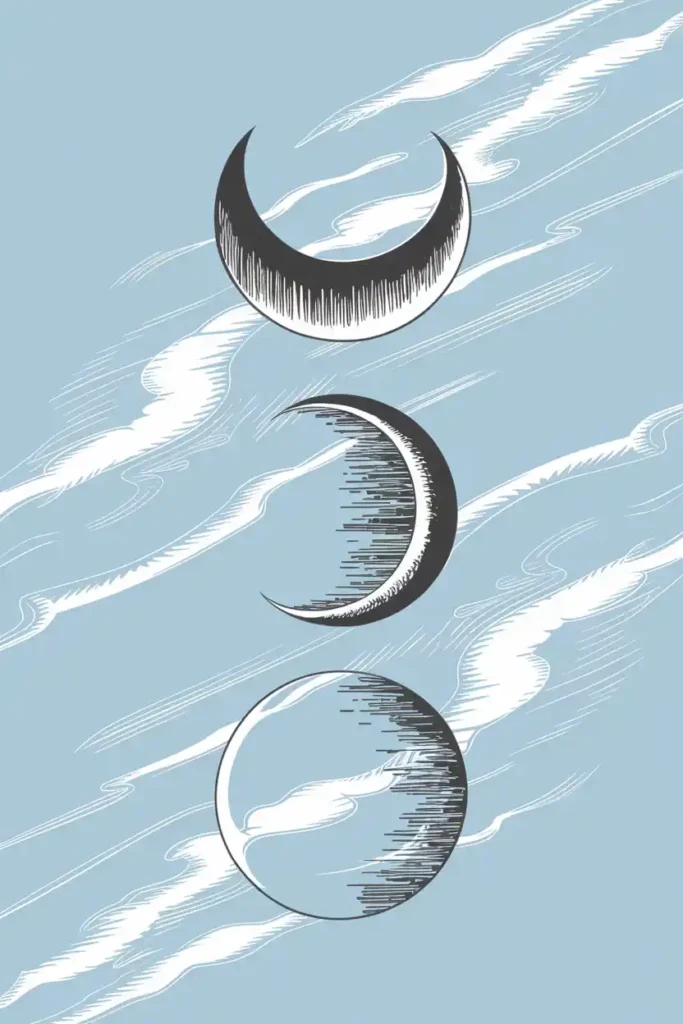



4. Moon with Clouds
Why It’s a Good Idea: It introduces atmospheric elements, adding drama to your drawing.
Suitable For: Intermediate artists.
Description: A moon peeking from behind soft clouds creates a dreamy effect, perfect for adding emotion.
How to Draw:
- Draw a full moon lightly.
- Sketch fluffy cloud shapes partially covering the moon.
- Add shading to show depth and highlight areas of the moon behind the clouds.
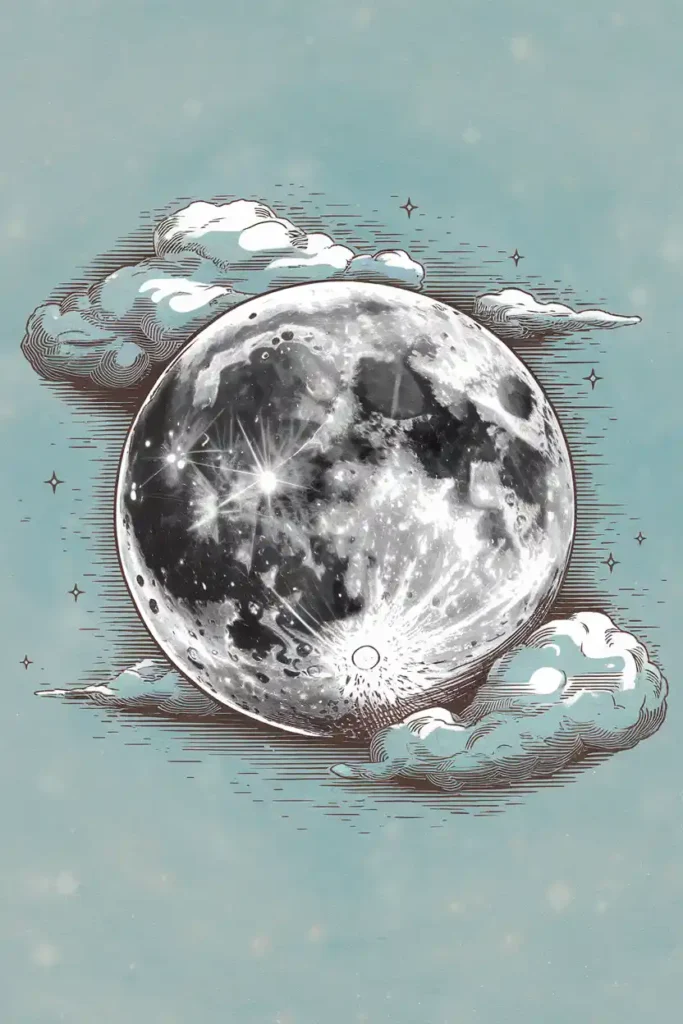


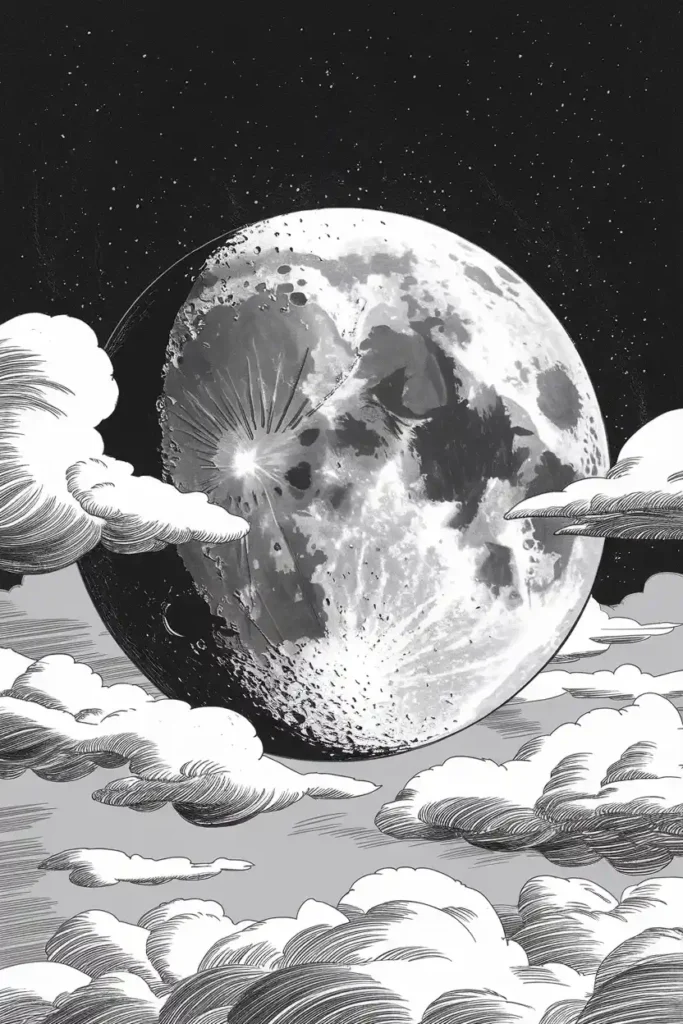
5. Harvest Moon with Trees Silhouette
Why It’s a Good Idea: This one helps you create contrast and a sense of depth.
Suitable For: Artists wanting to work on silhouettes.
Description: A bright harvest moon rising behind a line of trees is stunning and gives you the chance to explore negative space.
How to Draw:
- Draw a large full moon low on the page.
- Add dark silhouettes of tree branches at the base.
- Shade the moon lightly while keeping the trees completely dark for contrast.
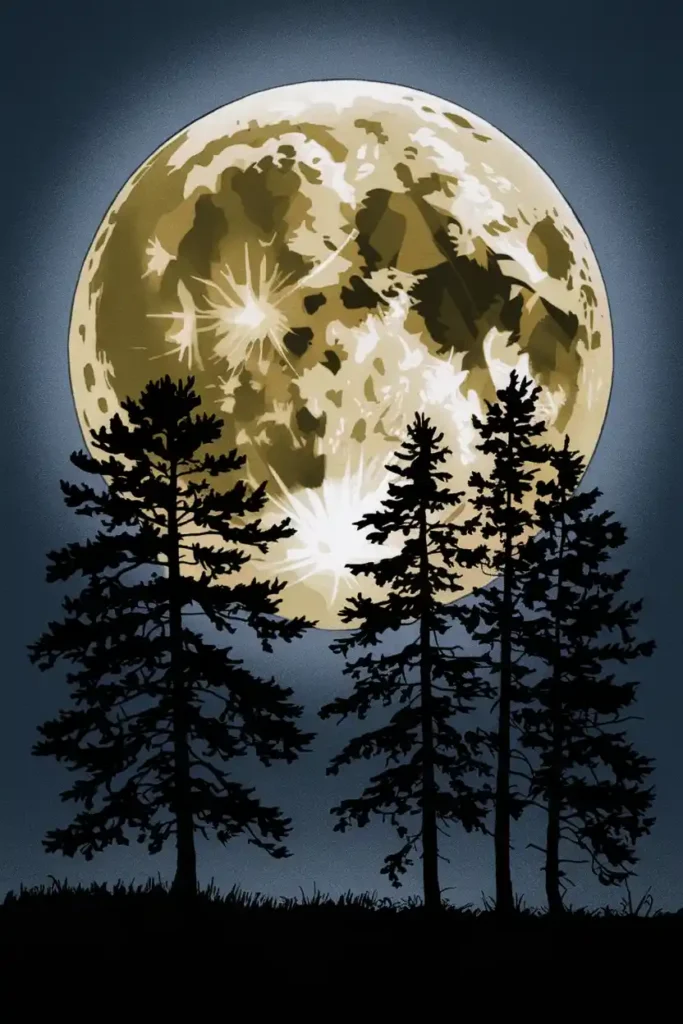
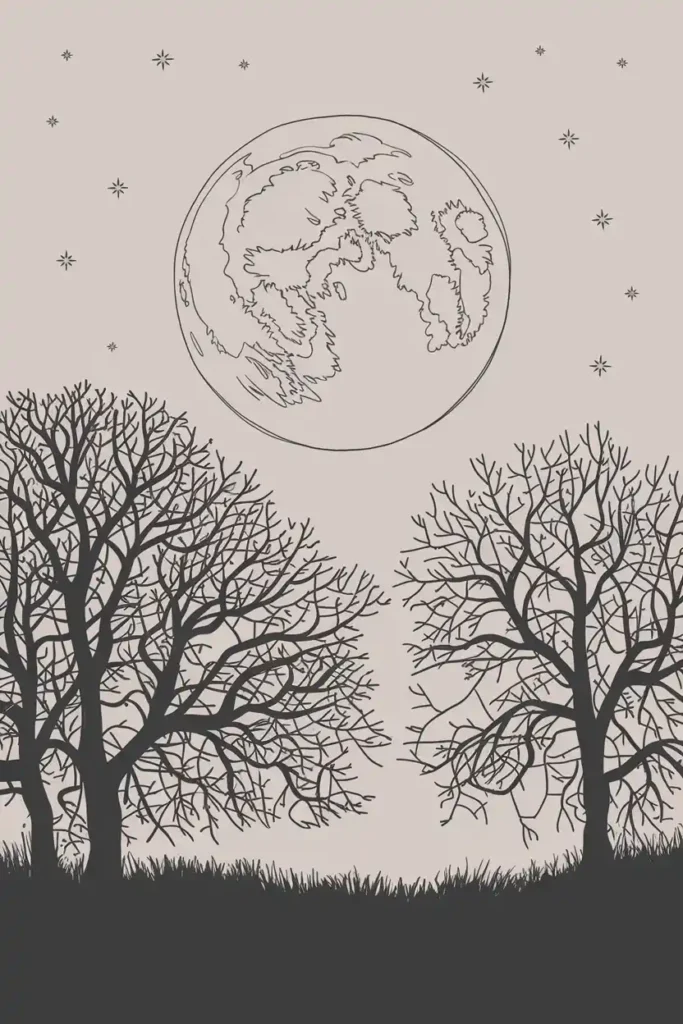


6. Night Sky with Stars and Moon
Why It’s a Good Idea: It helps you practice background elements and context.
Suitable For: All levels.
Description: A small crescent moon among a sea of stars creates a romantic and peaceful nighttime landscape.
How to Draw:
- Draw a small crescent moon in one corner.
- Add stars as dots scattered around the moon.
- Shade the background lightly to create a night sky feel.


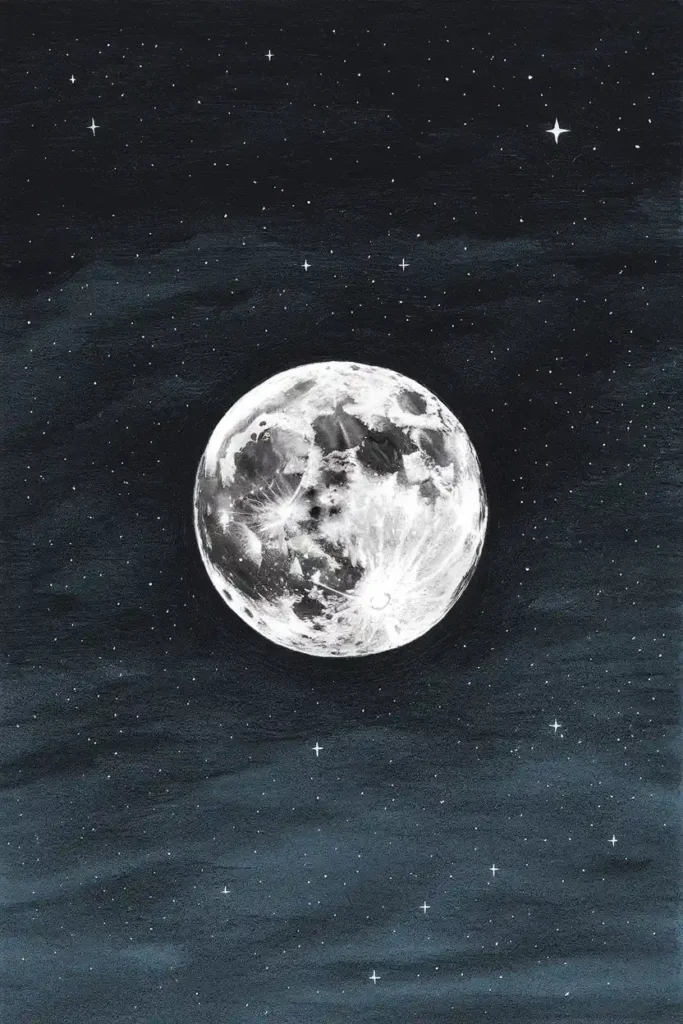

7. Half Moon with Detailed Surface
Why It’s a Good Idea: This lets you practice detailed textures.
Suitable For: Intermediate to advanced artists.
Description: A half-moon with detailed craters and surface textures offers a realistic and rich portrayal.
How to Draw:
- Draw a half-circle.
- Add small craters using curved lines and shading.
- Shade along one side to create depth.
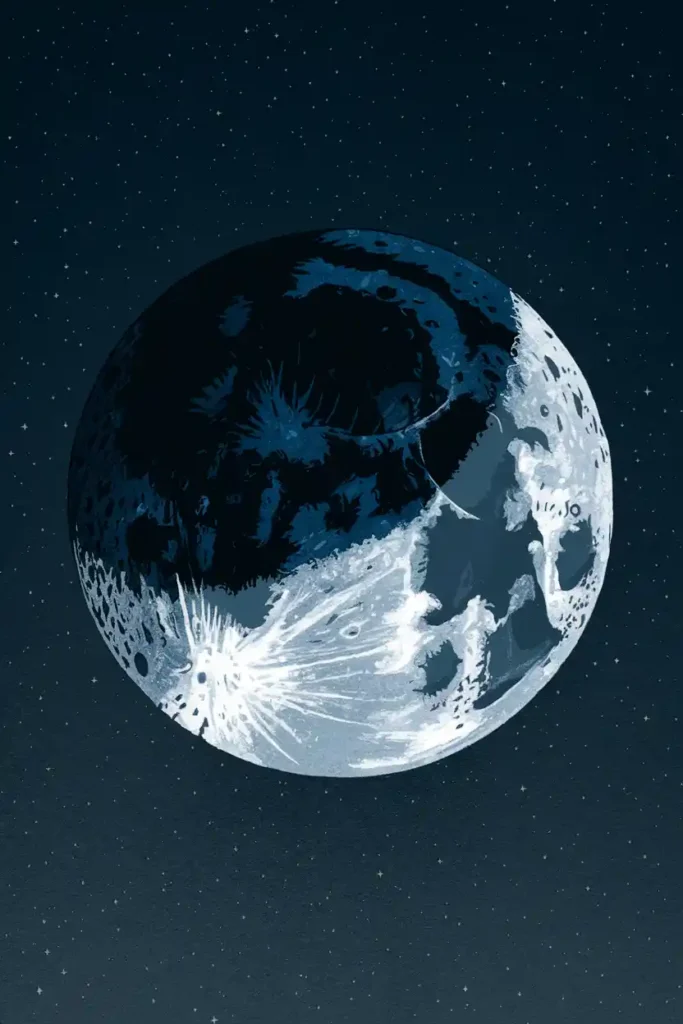
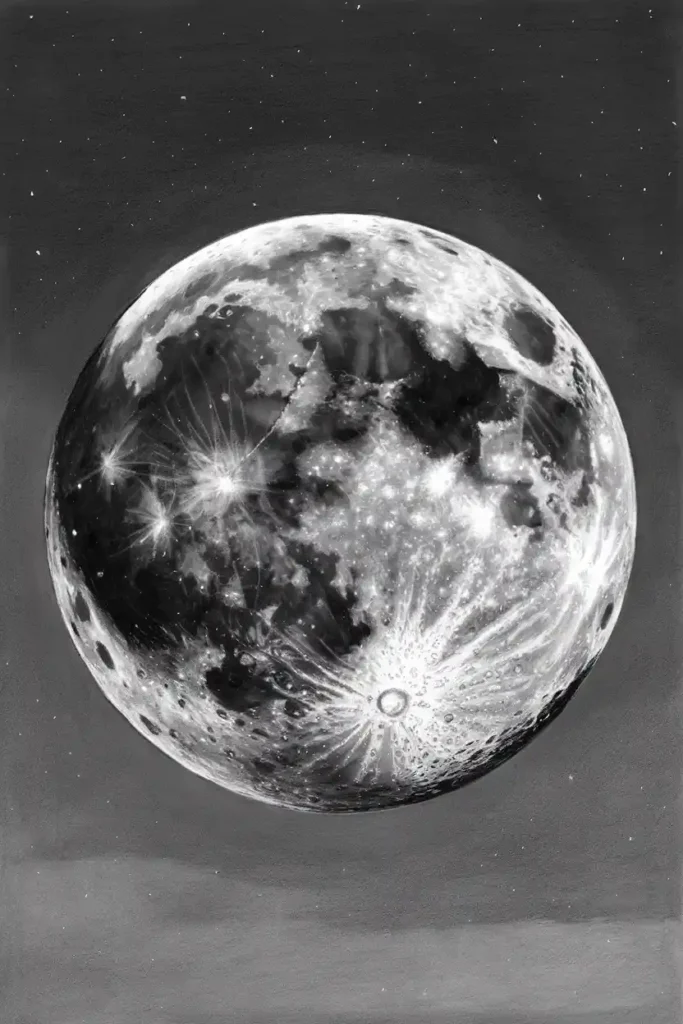
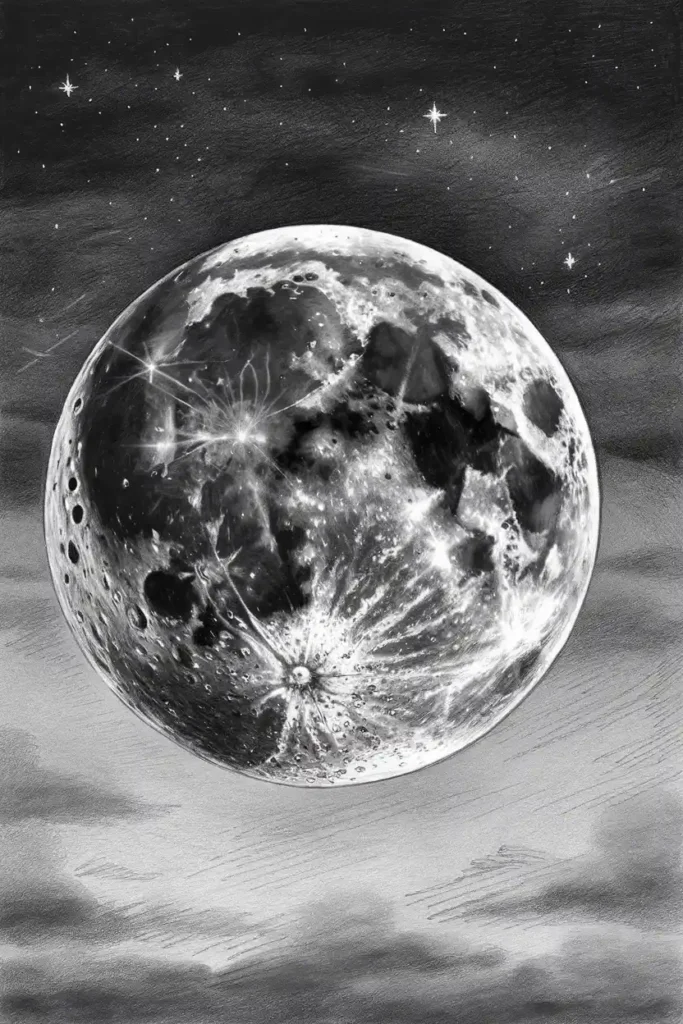

8. Moon Reflecting on Water
Why It’s a Good Idea: Reflective surfaces are always an exciting challenge.
Suitable For: Intermediate artists.
Description: A moon reflecting on calm water creates a tranquil scene, perfect for practicing reflections.
How to Draw:
- Draw a full moon in the sky.
- Lightly sketch a rippled oval beneath it.
- Shade the oval to represent the reflection in the water.




9. Moon with a Wolf Silhouette
Why It’s a Good Idea: Creates a dramatic scene, incorporating an animal figure.
Suitable For: Intermediate artists.
Description: The classic image of a wolf howling at the moon adds emotion and storytelling to your drawing.
How to Draw:
- Draw a full moon.
- Sketch the silhouette of a wolf in front of the moon.
- Darken the wolf completely and shade the moon for contrast.

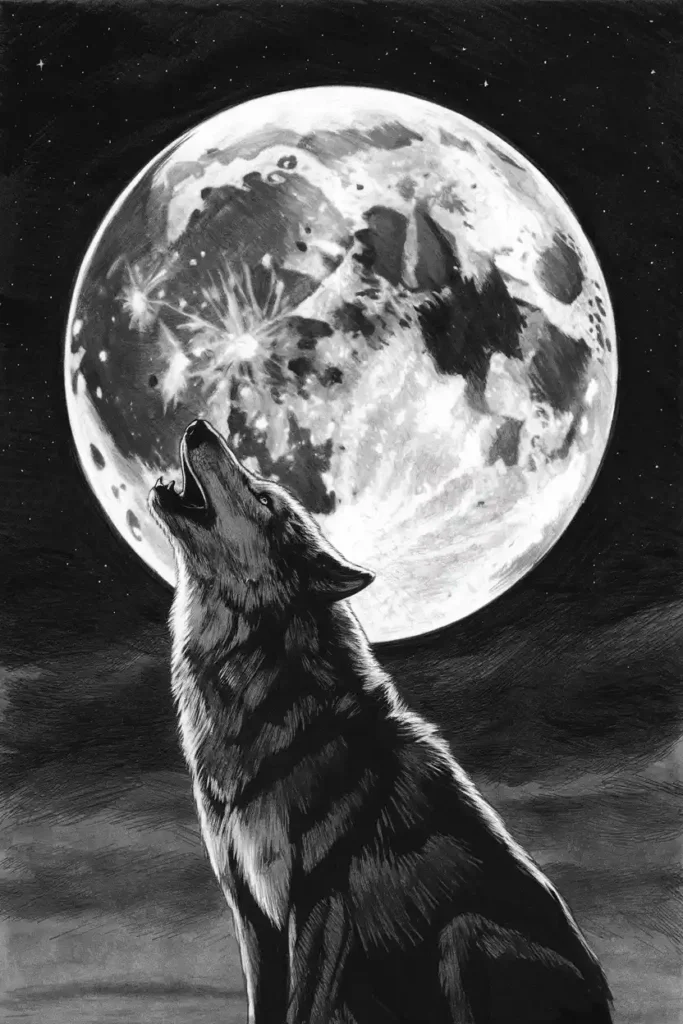

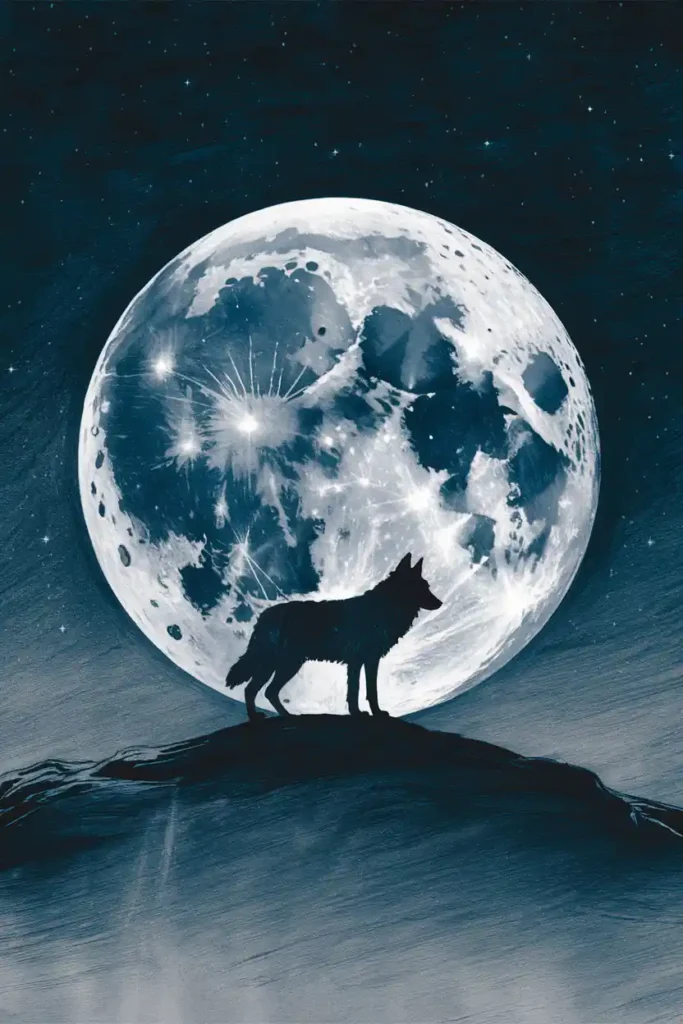
10. Blood Moon
Why It’s a Good Idea: A blood moon is vibrant and intense, allowing you to explore a range of shading techniques.
Suitable For: All levels.
Description: This red-tinged moon requires shading skills to create the impression of a glowing, eerie moon.
How to Draw:
- Start with a circle.
- Shade the entire moon with a dark gradient, focusing on giving it a reddish tint.
- Use softer pencil strokes to add a glowing effect.
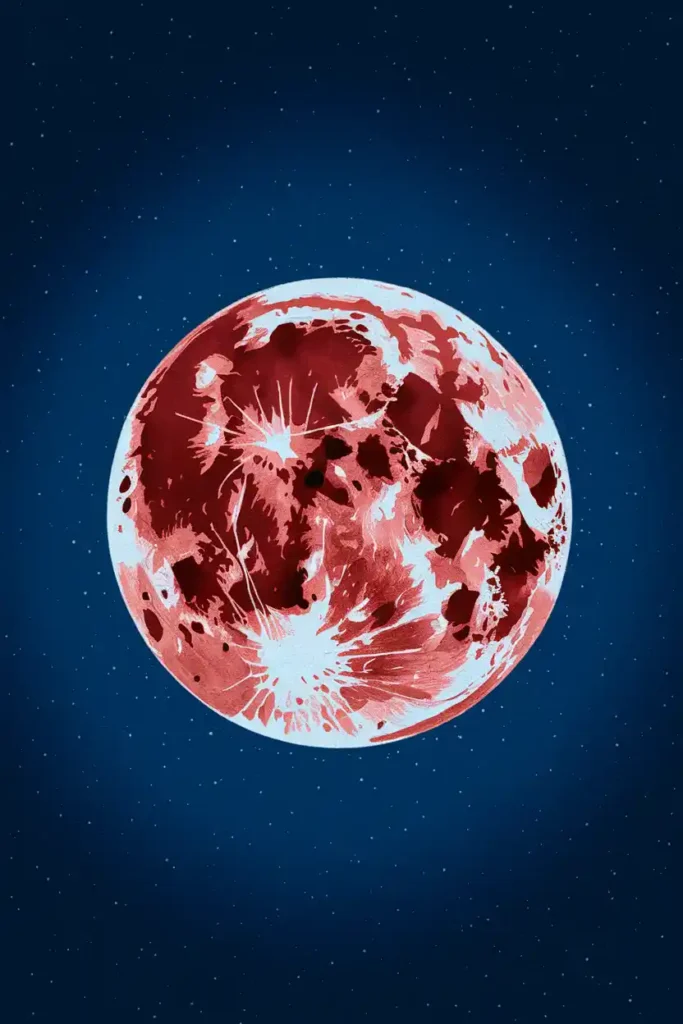

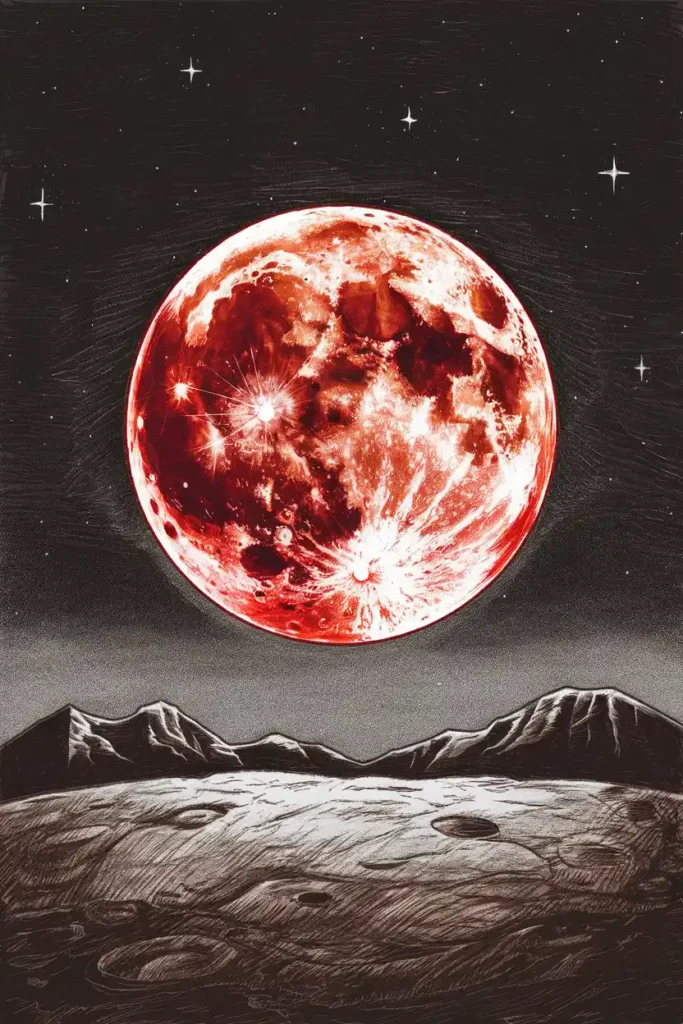

11. Moon with Owl Silhouette
Why It’s a Good Idea: Adds an animal element with emphasis on contrast.
Suitable For: Intermediate artists.
Description: An owl perched in front of the moon gives your drawing a mysterious nighttime feel.
How to Draw:
- Draw a full moon.
- Sketch an owl with large wings in front.
- Use solid black for the owl and light shading for the moon.
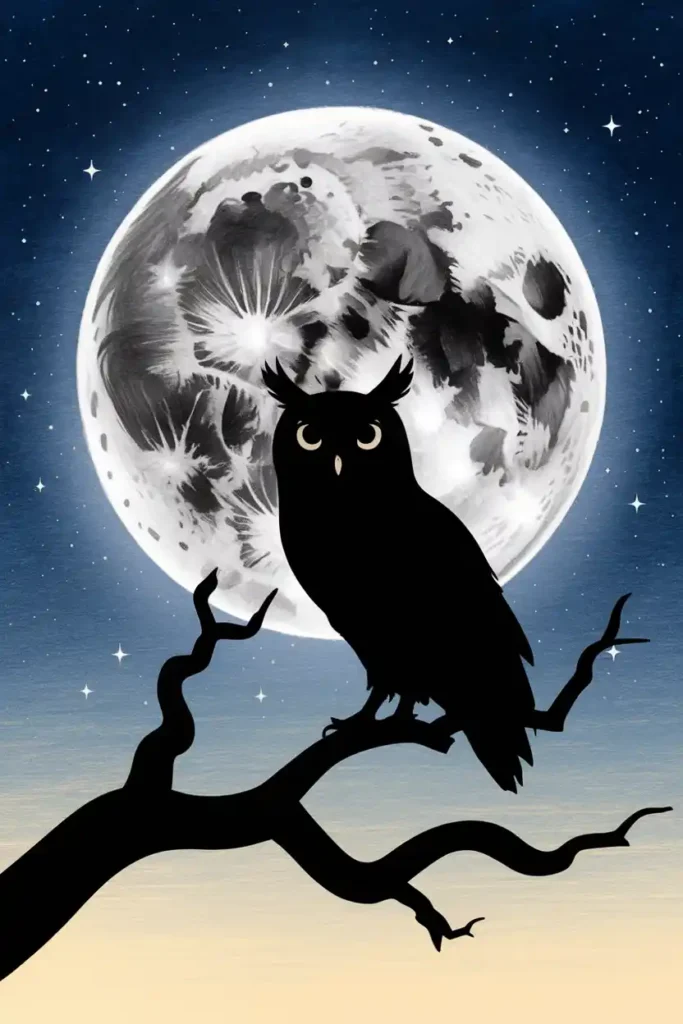

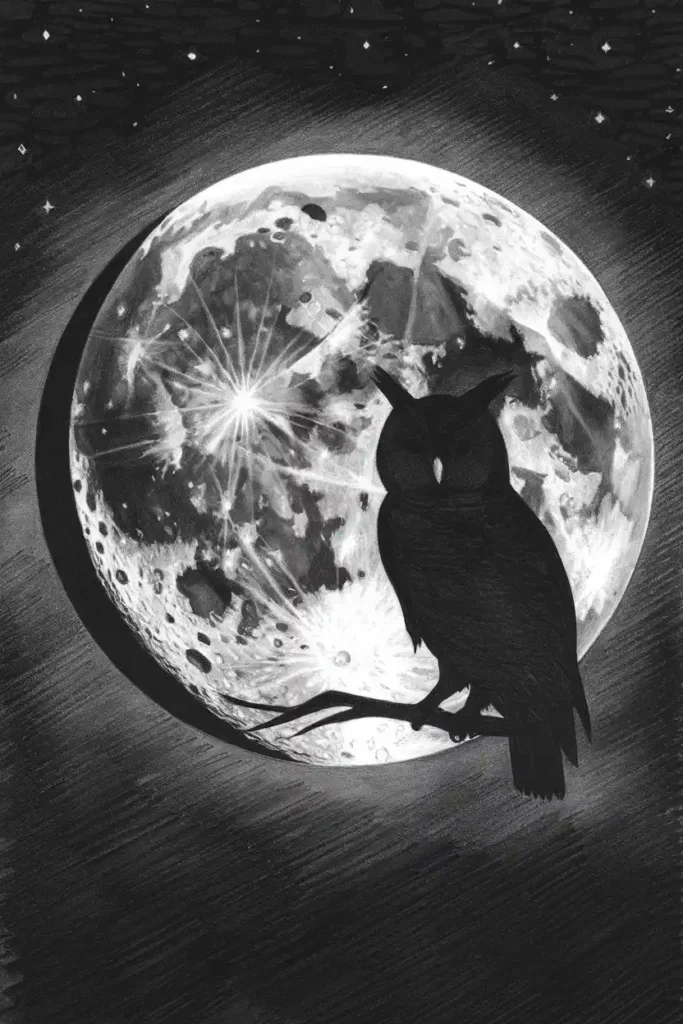

12. Crescent Moon with Floral Pattern
Why It’s a Good Idea: Adds a whimsical and decorative aspect.
Suitable For: All levels.
Description: A crescent moon decorated with flowers is perfect for anyone wanting to add an artistic twist.
How to Draw:
- Draw a crescent moon.
- Add small flowers and leaves along the inner curve.
- Shade to add texture and make it pop.

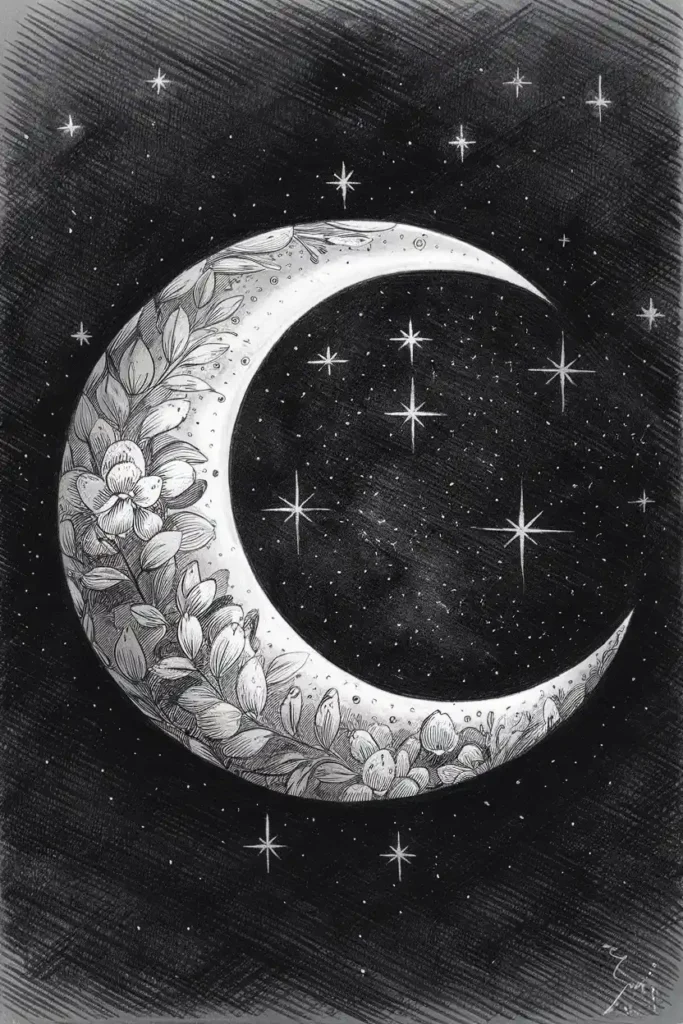
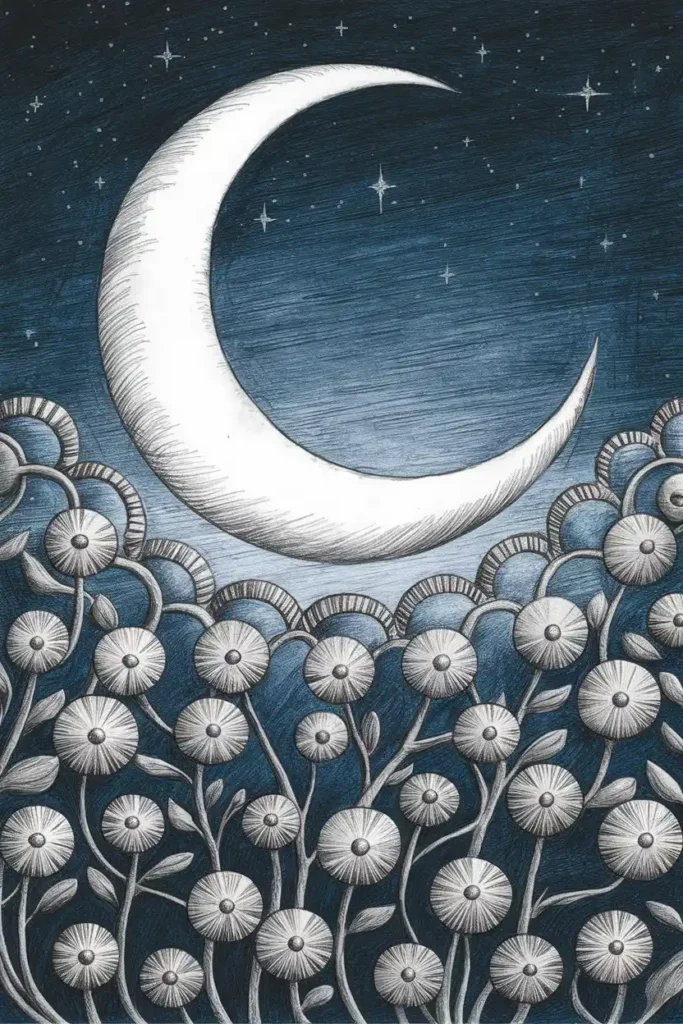
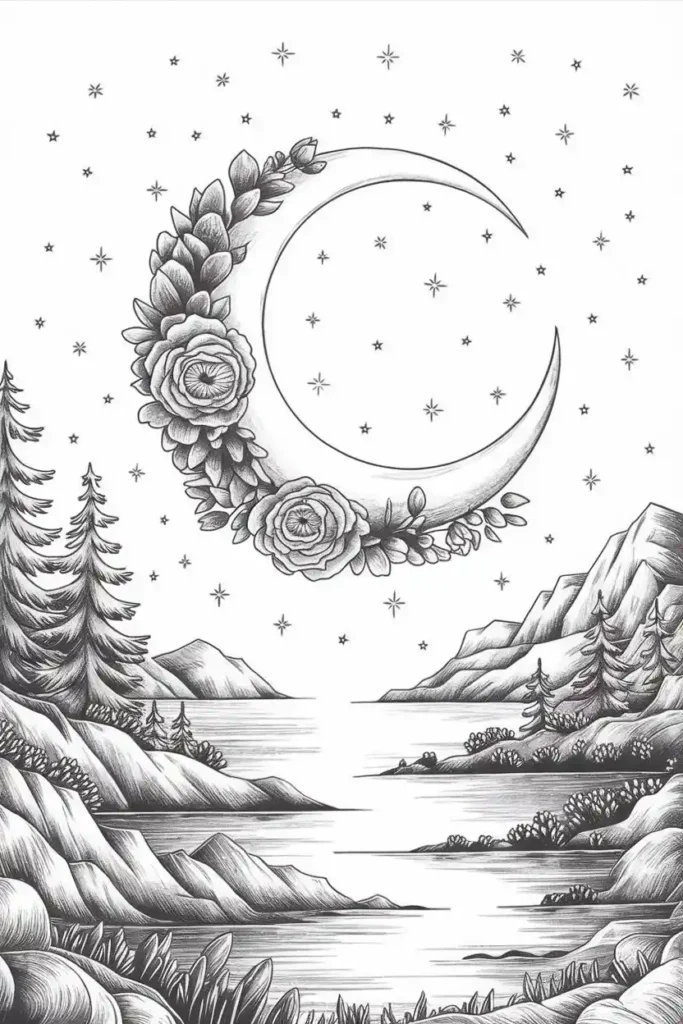
13. Moon in a Nighttime Landscape
Why It’s a Good Idea: Incorporates foreground and background elements.
Suitable For: Advanced beginners and intermediate artists.
Description: A moon surrounded by trees or mountains offers a complete and immersive scene.
How to Draw:
- Draw the moon high in the sky.
- Add the horizon, with mountains or trees below.
- Shade to create layers and depth.
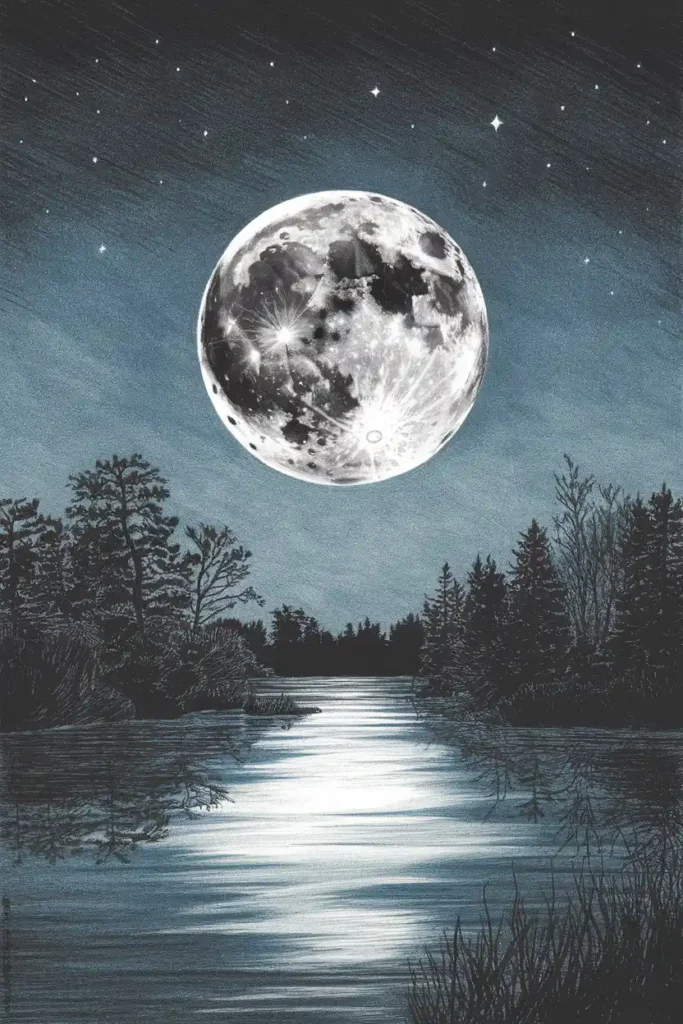
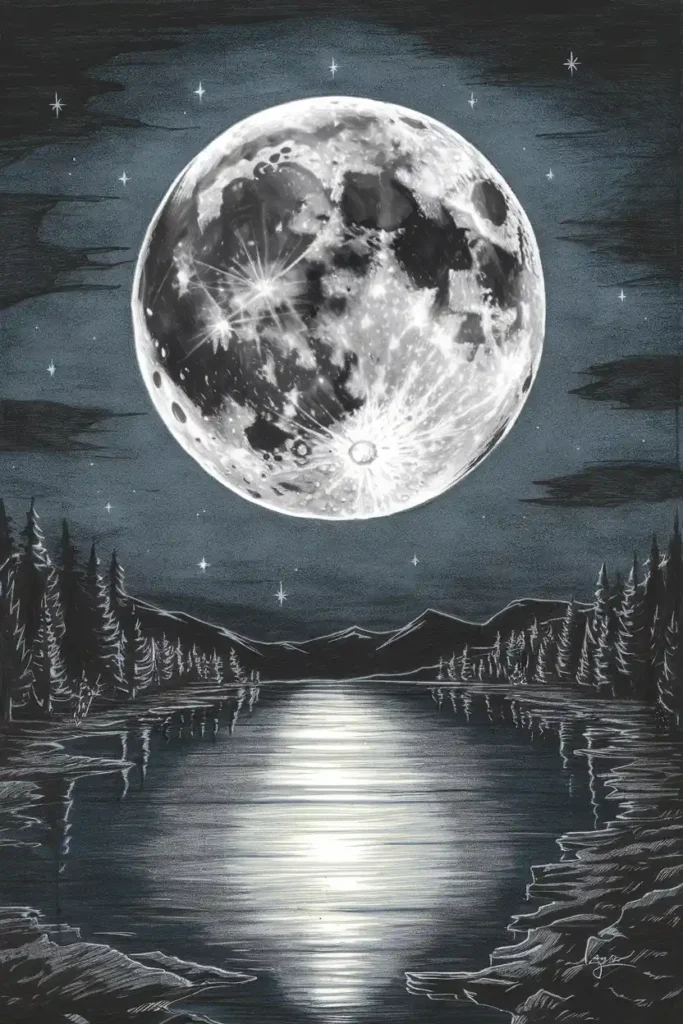


14. Sleeping Moon with Face
Why It’s a Good Idea: Fun, creative, and cartoon-like.
Suitable For: Beginners and kids.
Description: A crescent moon with a sleepy expression adds personality to your drawing.
How to Draw:
- Draw a crescent moon.
- Add facial features, like closed eyes and a smile.
- Shade lightly for depth.




15. Moon and Shooting Stars
Why It’s a Good Idea: Adds movement and dynamics to a drawing.
Suitable For: All levels.
Description: A moon surrounded by shooting stars gives a sense of wonder and movement.
How to Draw:
- Draw a full or crescent moon.
- Add several curved lines with star shapes at the tips to represent shooting stars.
- Lightly shade the background for a night effect.
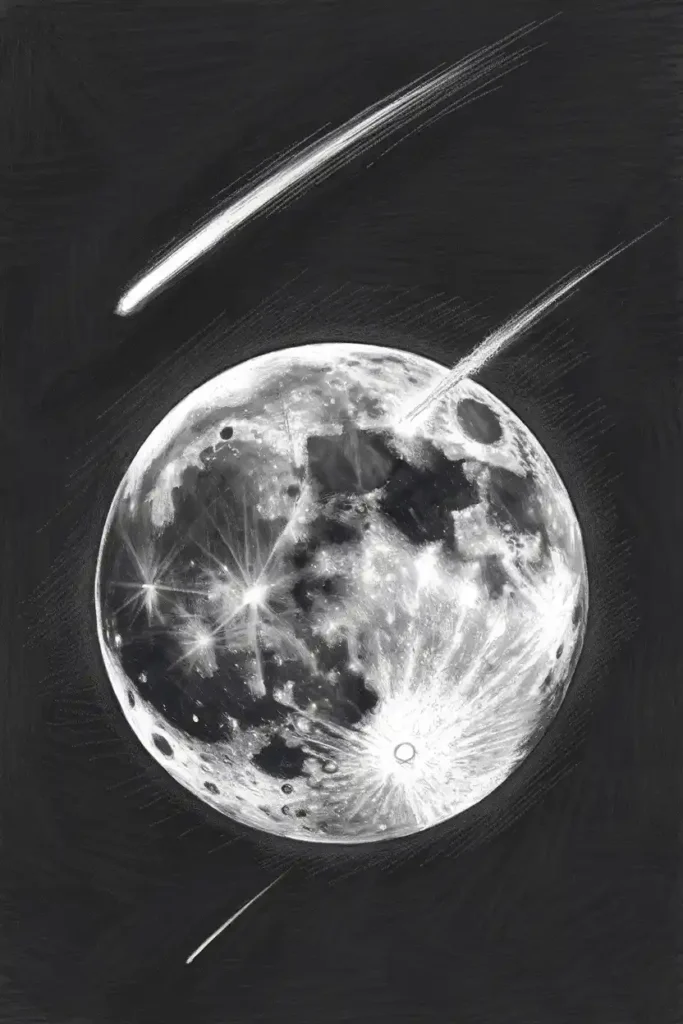

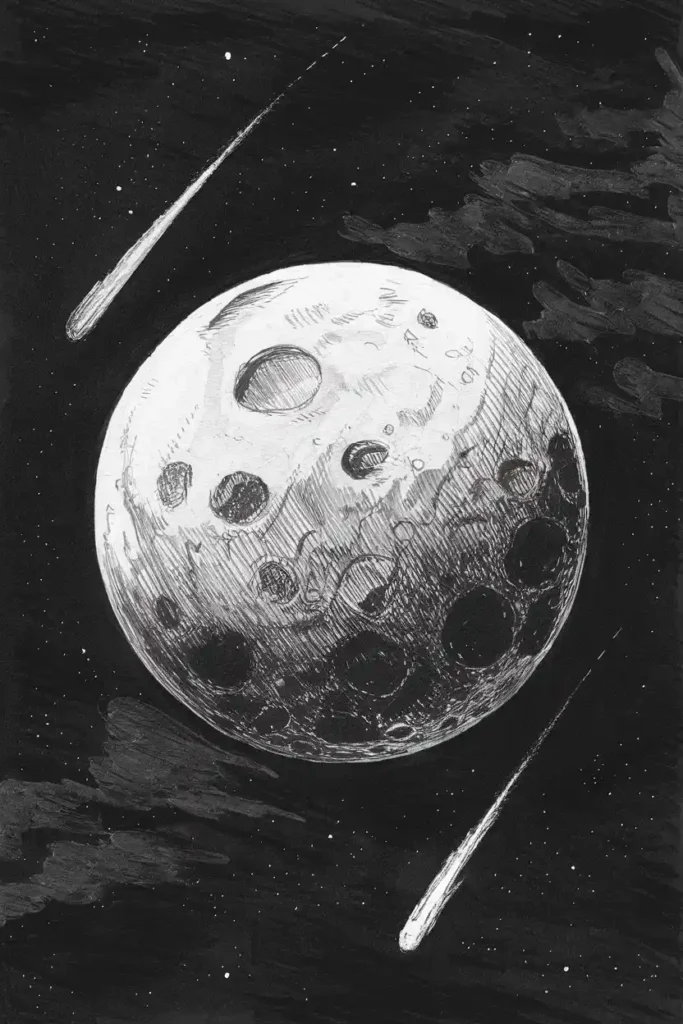

Can I Incorporate Japanese Art Style into Moon Drawings with Pencil?
Yes, you can definitely incorporate inspiring japanese art style ideas into moon drawings with pencil. Utilize traditional Japanese techniques such as minimalistic design, use of negative space, and subtle color gradations to create a beautiful and unique moon drawing inspired by Japanese art.
These 15 moon drawing ideas give you a variety of ways to explore this beautiful celestial body. Whether you’re just starting out or are looking for a challenging subject, there’s something here for everyone. Grab your pencil, pick a moon idea, and let your creativity soar! Which one are you excited to try first?
